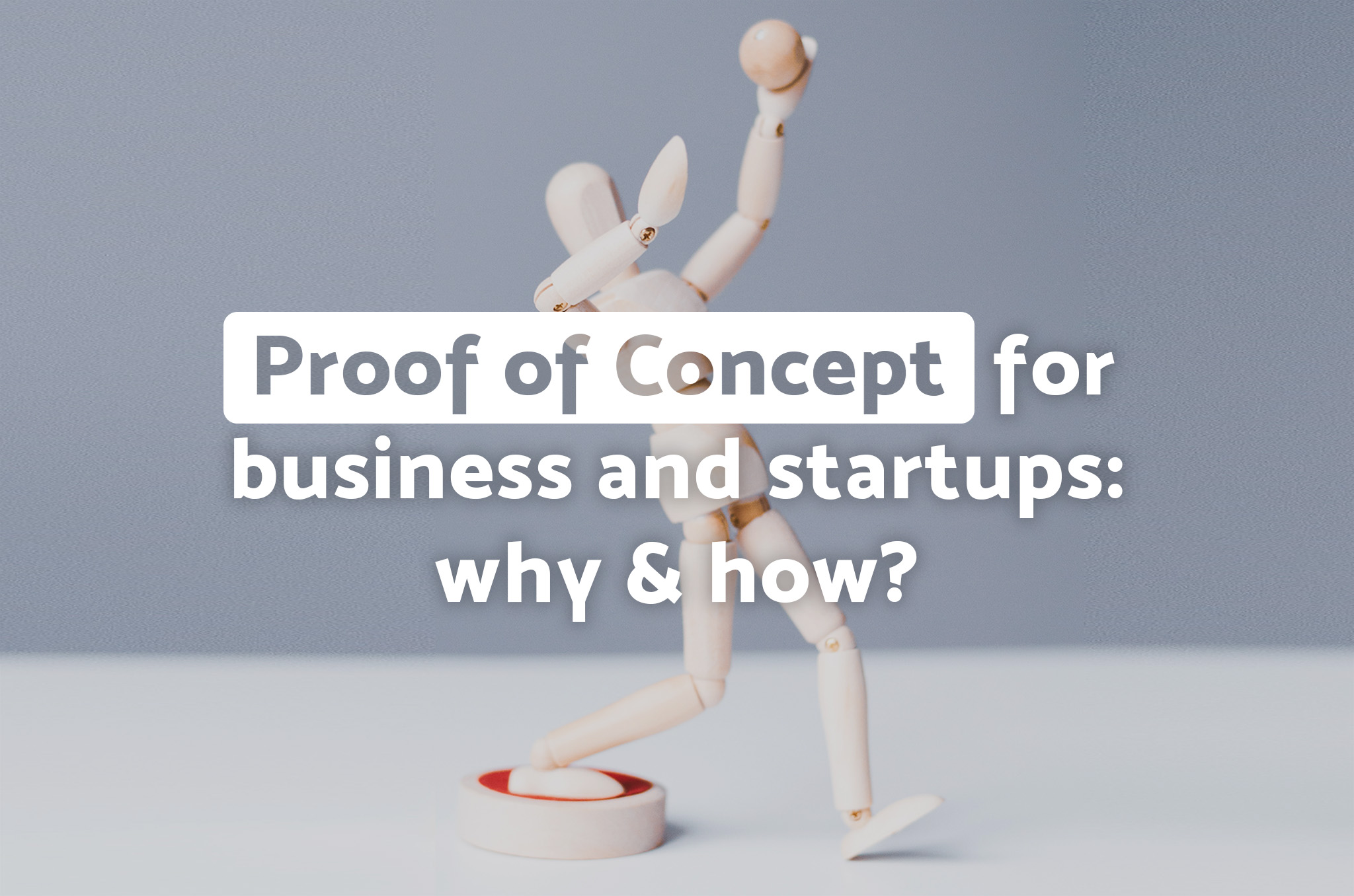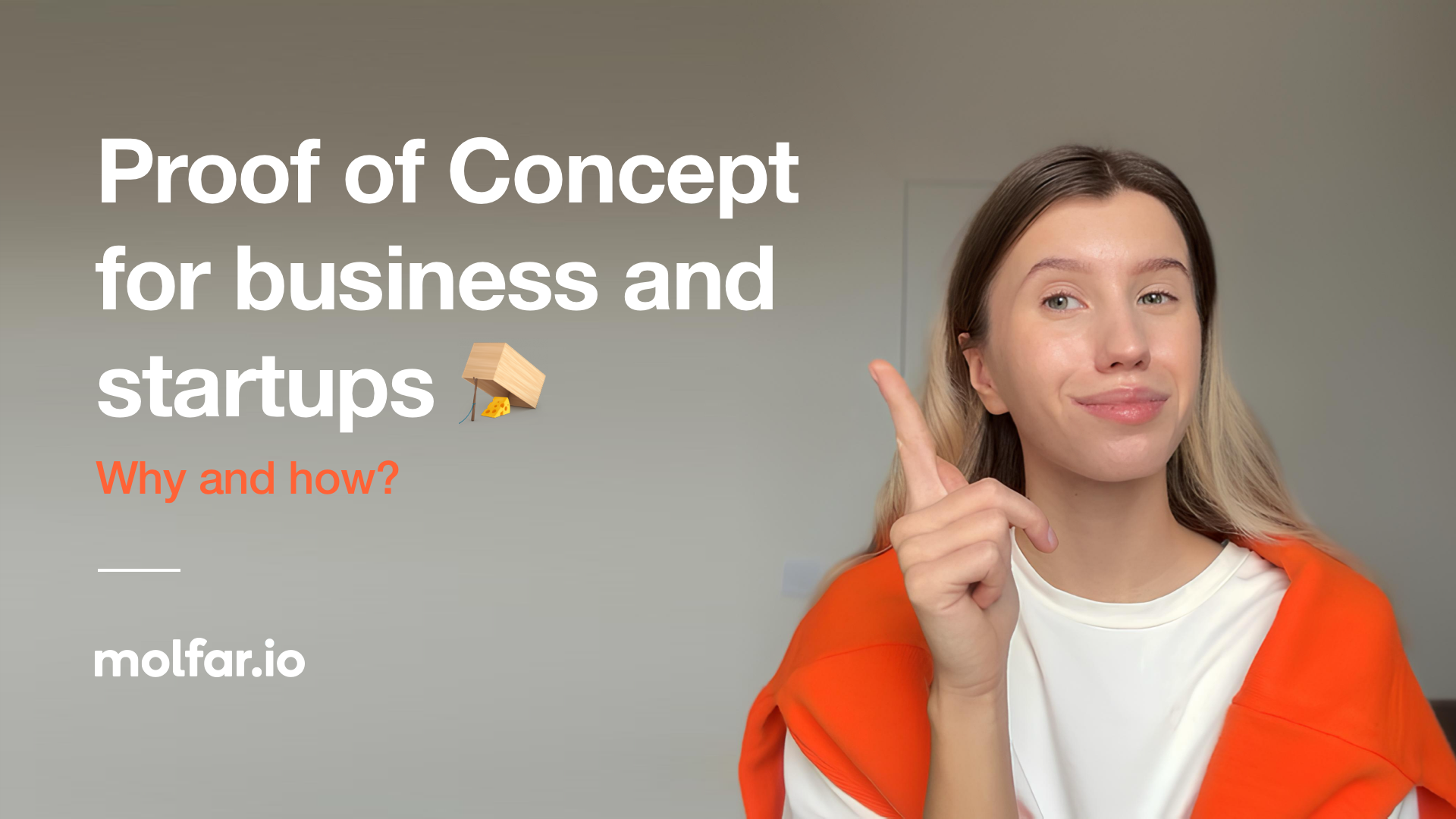Proof of Concept for business and startups: why & how?
How early-stage entrepreneurs can build a proof of concept to get customer feedback and attract investors. One of the most effective ways to check that your product will resonate with the intended audience is to create a proof of concept.
You have a bright idea about HUGE service that will be definitely AWESOME.
But you don’t have the time to go out and build the app / produce a hardware / shoot all the content, and HOPE people paid you for it. That'd take months and probably a good amount of money.
Instead of pausing here to invest weeks or months into building your course, writing your book, developing an app or creating a complex website, we still want to make sure there's a (paying) demand for what you plan to build - before you actually go out and build it.
That's where building a simple proof of concept (POC) comes into play.
“A proof of concept is a realization of your method or idea that demonstrates its feasibility.”
Well constructed proof of concepts are designed to achieve these three things:
Verify that solution solves the problem you’re attempting to address.
Confirm that solution is valued by your future customers.
Determine whether or not people will pay for your solution.
Setting your proof of concept goal
Once you have a clearer picture of what your specific product or service offering is going to be (based on your target market conversations and research) and you've developed a competitive advantage that's going to make your offering unique in some way, it's time to set a goal for what you want your proof of concept to achieve.
Your proof of concept goal will be unique to your business and it needs to give you relative confidence in the future of the solution you’re building.
There’s no definitive, across the board success metric for all proof of concepts, but we always recommend setting a proof of concept goal of generating a specific amount of revenue from a pre-defined number of paying customers.
You know, only that which is properly tracked and measured, can be improved. Here are a few popular examples of proof of concept goals:
10 pre-orders for your upcoming product or service
100 listeners on your first podcast episode
100 waiting list subscribers
$100 in affiliate commissions generated
Getting a book proposal accepted by a publisher
Fully funding a Kickstarter campaign
For example, if you want to write a book the proof of concept goal can be 10 pre-orders for your future book. If you could get 10 people to pay for a book that doesn't yet exist, that'd give you enough confidence to go out and actually write the content & create the book.
To make it possible you can create a simple preview of what that would be, sharing the value of your future book. The form is secondary. Here are a few examples of the many different forms a proof of concepts can come in:
Google Doc (e.g. future hiking guide)
Blog post (announcing something)
Self-published book or ebook
Explainer video (like dropbox did)
Fake landing page (selling the product that doesn't exist)
Email or email newsletter (like how ProductHunt started)
Facebook or Slack group (build a community, then a product)
Hand-built prototype (clickable, or partly functional)
Here is an interesting example of a hiking guide. It took a couple of hours to write a simple Google Doc Proof of Concept that was just a few pages long. It’s ridiculously simple (721 words). The main idea - focusing on how it would benefit readers. Note that at the end of the proof of concept page, there is a link to where people could immediately go and pre-order the guide. Giving readers the option to go and buy the guide without any additional steps would tell a lot about how excited they are for this guide.
Explainer videos. Have you seen how Elon Musk does it? E.g. with The Boring Company he started with a cool video “how it will work”. Then he made a buzz in all tech media and estimated the response: does somebody need it? Does anybody want to invest in this project with me? And such people appeared - the project is fully funded by VCs. Another example - Starship Earth-to-Earth video. Again, a demo video + media buzz. Sure, we are not Elon and can’t make TechCrunch, Mashable and Business Insider write about our new project at once. But this is just an example for you to understand how this approach works. It's much more important to first understand if you can sell your product/service to the market and how big that market is, rather than how much it might cost to bring your product/service to market.
Summary
A proof of concept is like a small research that gives you green light to go further with the development of a product. If your idea was proved on the POC stage - you can move further to minimum viable product (MVP) development. The purpose of building an MVP is to get the minimum version of the product to the market. This way you’ll get to know whether it has any value at all. And if it does, you can start making money right away from your first customers, the early adopters. Our article about world-famous Unicorns and their first MVPs can help you to understand it more.
When you don’t know if an idea can be brought to life, start with building a POC. Then you go on by making the first prototype to test the general look of your product. This prototype through several cycles of development will later become a minimum viable product that will be delivered to the market.
Everything is not as hard as it seems. The hardest part - motivating yourself to actually start this project. So just get started and enjoy the process ✌️
If you need any consultation regarding POC, MVP or planning these processes - feel free to contact us - we are ready to help.




